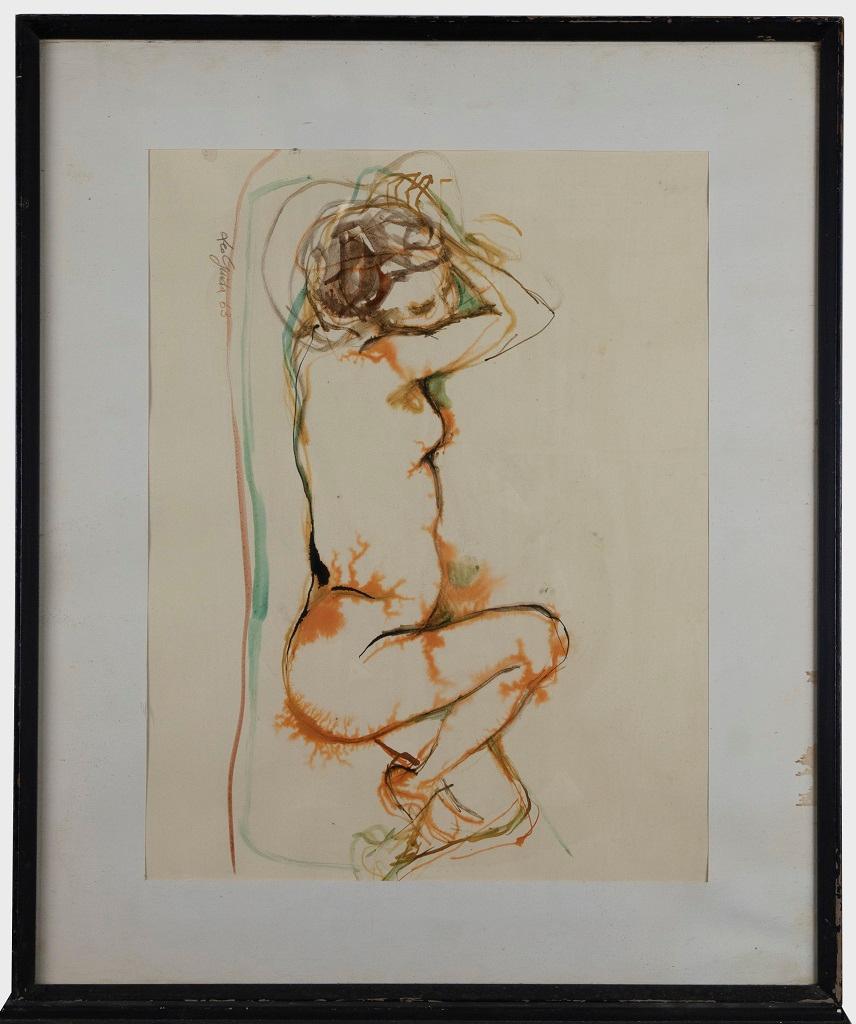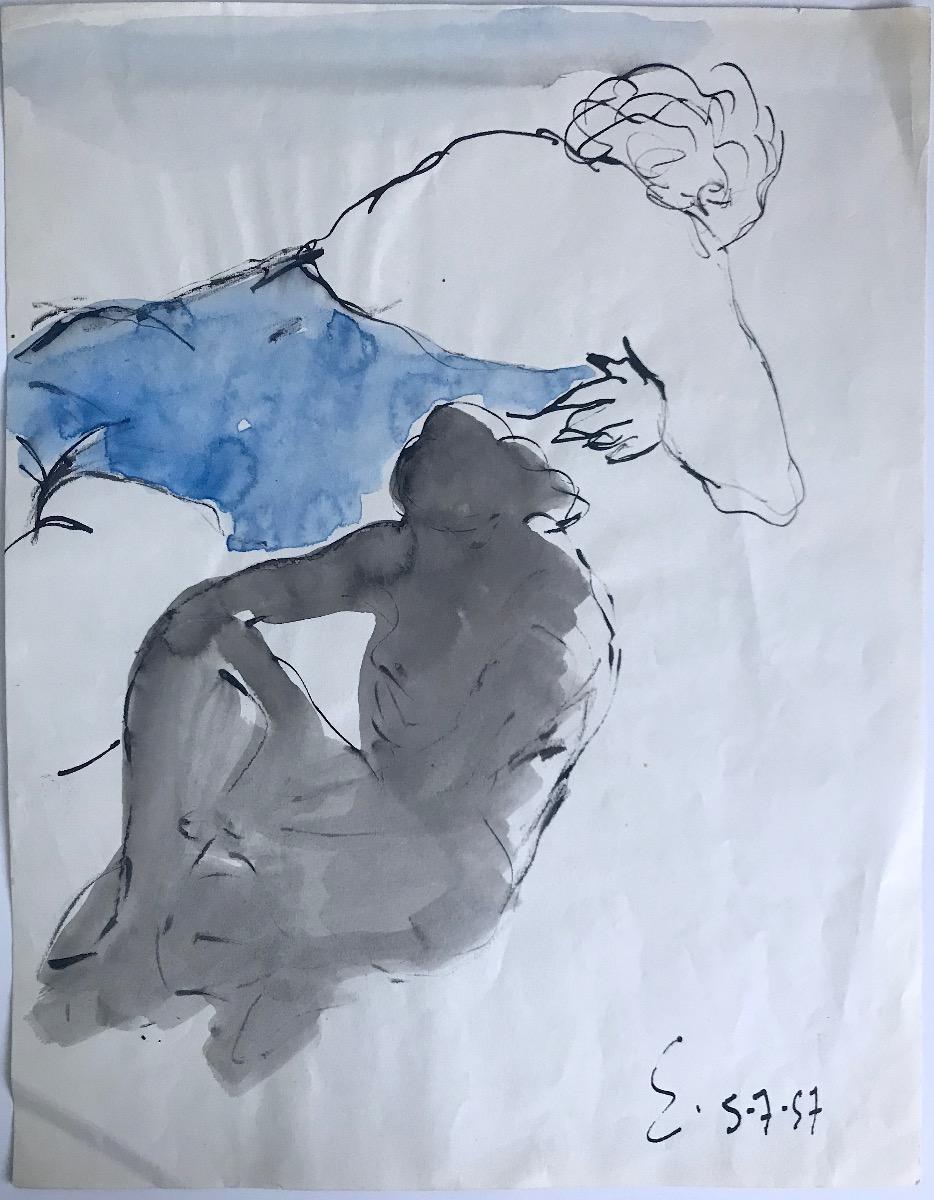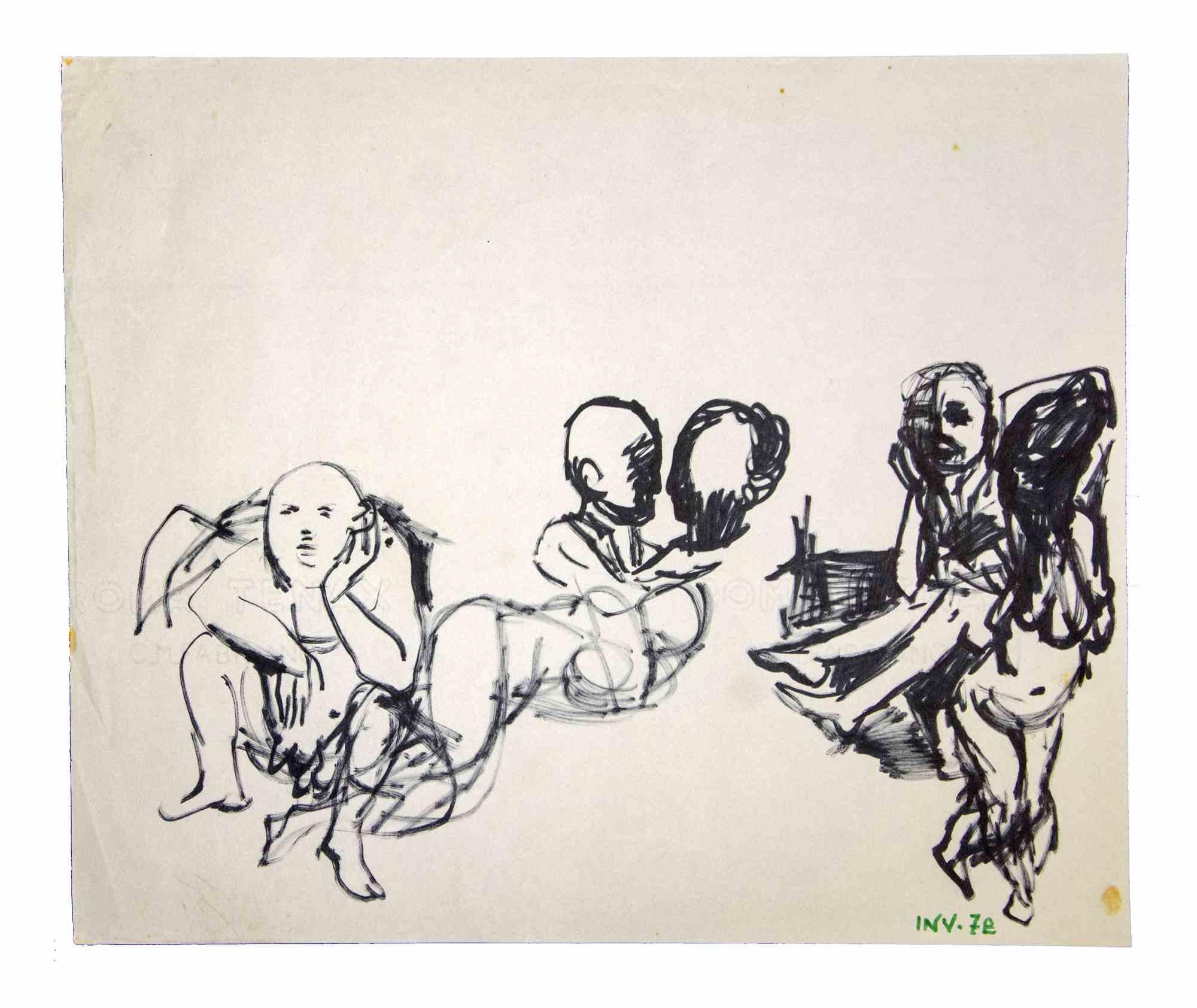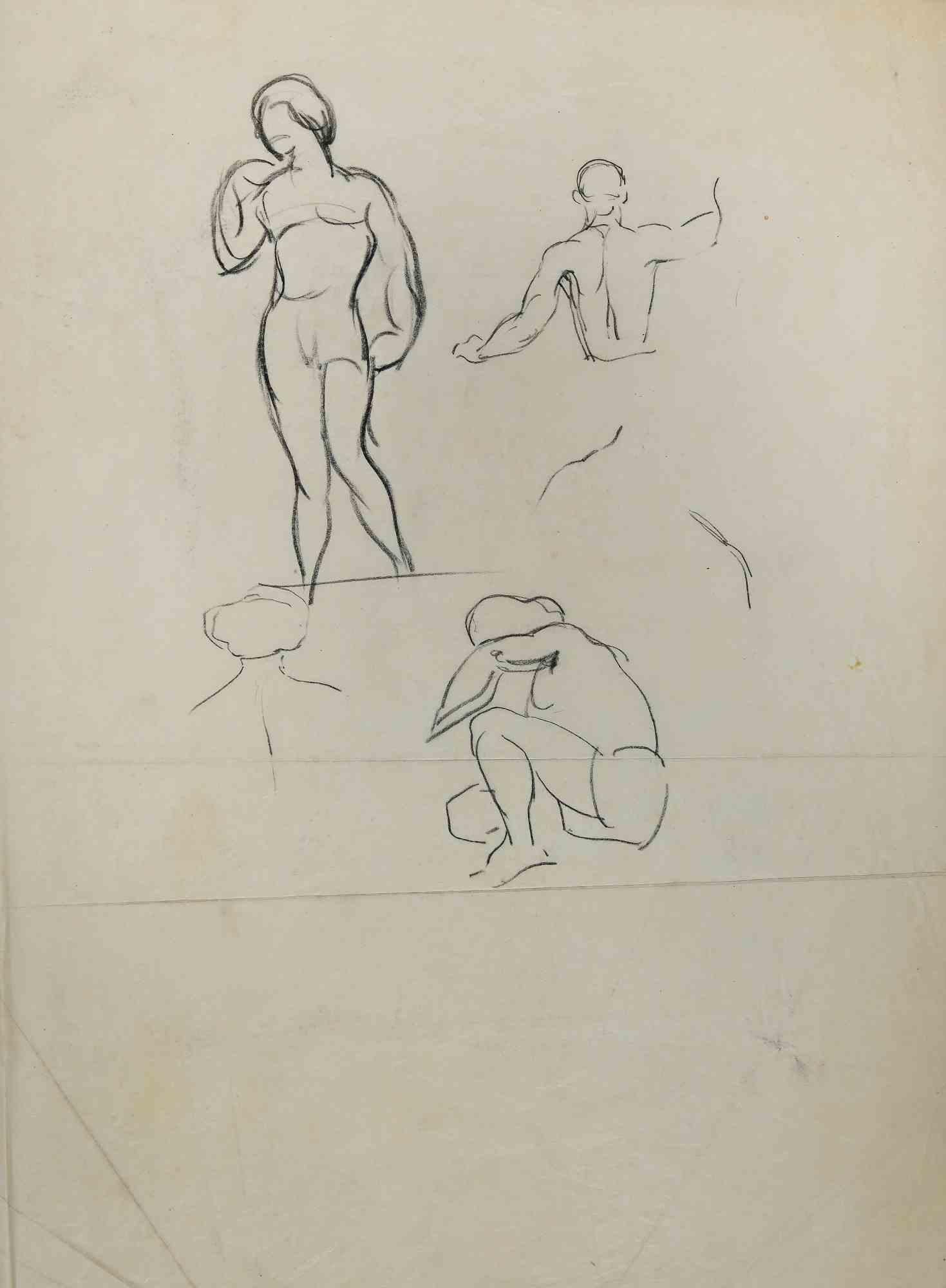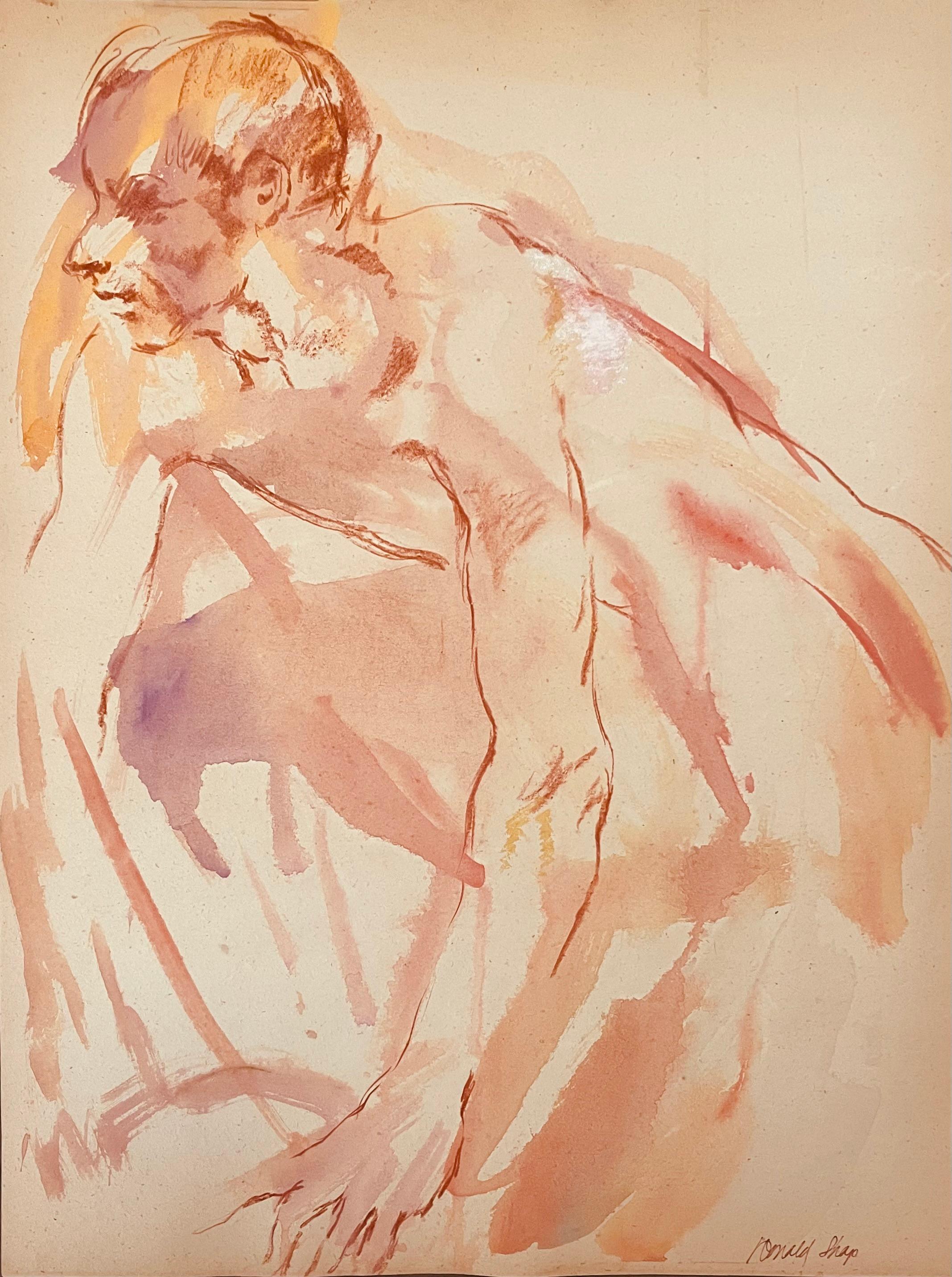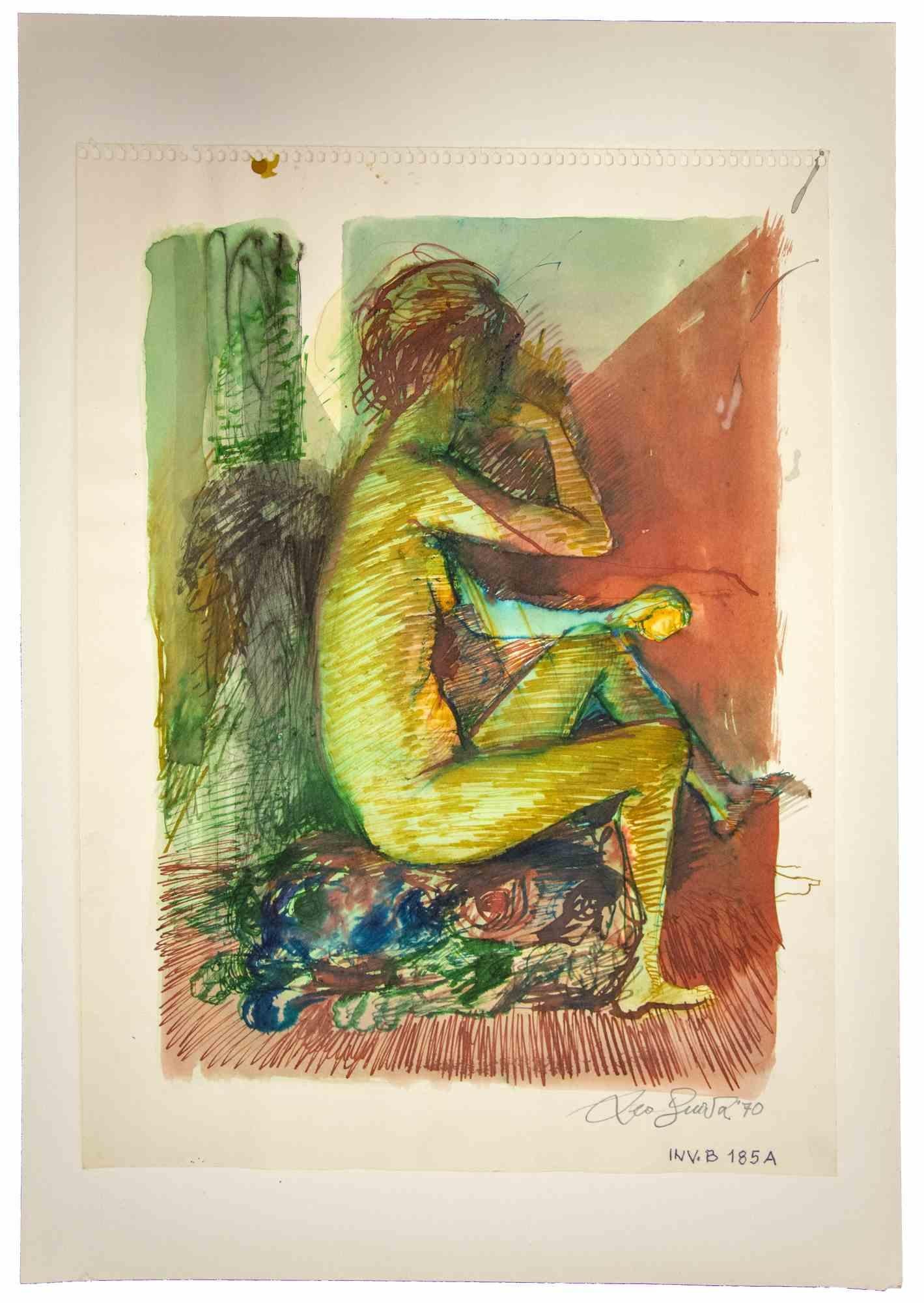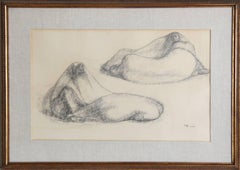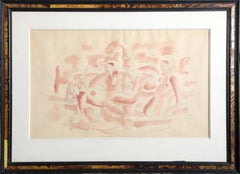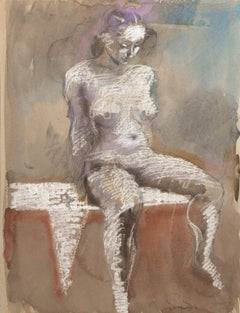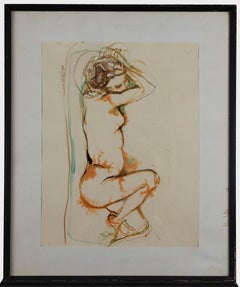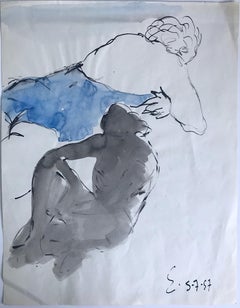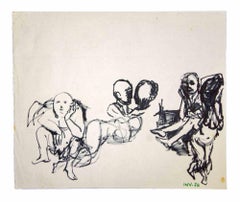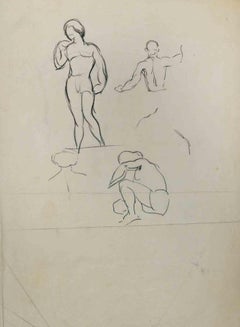Francisco ZúñigaStudy for Marbles, Original Drawing by Francisco Zuniga 19621962
1962
About the Item
- Creator:Francisco Zúñiga (1912 - 1998, Costa Rican)
- Creation Year:1962
- Dimensions:Height: 26.5 in (67.31 cm)Width: 30.5 in (77.47 cm)
- Medium:
- Movement & Style:
- Period:
- Condition:
- Gallery Location:Long Island City, NY
- Reference Number:Seller: RO428601stDibs: LU4661284193
Francisco Zúñiga
Known as one of the most important Expressionist artists to emerge from Latin America, Francisco Zúñiga is remembered for his monumental sculptures, figurative paintings and prints, nude drawings and portraits of Central America’s rural indigenous women.
Born in San José, Costa Rica, in 1912, Zúñiga’s exposure to artistic sculpture began at the age of 13, when he worked with his father, Manuel Maria Zúñiga, carving religious figures for local churches. Spurred by a growing interest in art, Zúñiga attended San José’s School of Fine Arts, where he became influenced by classical, renaissance figurative art. After winning several local awards for his prodigious talent, Zúñiga left San José for Mexico City in 1936.
In Mexico City, he attended La Esmeralda, the painting and sculpture school of the National Institute of Fine Arts. There, Zúñiga studied under sculptor Oliverio Martinez and painter Manuel Rodriguez Lozano.
In 1938, Zúñiga joined the faculty at La Esmeralda, where he taught sculpture and painting until 1970. Meanwhile, during the early 1940s, Zúñiga’s works began to attract the attention of art critics in the United States as well as important collectors. In 1941, the Arts Club of Chicago included him as part of their “Thirteen Mexican Artists” group show. The following year, Alfred Barr, director of the Museum of Modern Art in New York, purchased one of his stone sculptures for MoMA’s permanent collection. Then, in 1943, New York’s Metropolitan Museum of Art acquired two of Zúñiga’s drawings.
Throughout most of his career, Zúñiga limited his subject matter to indigenous peasant women. However, he experimented with working with a variety of materials for his sculptures — bronze, alabaster, plaster, marble and modeling clay — and sought new media to create his art. (He made his first lithograph at age 60.)
Zúñiga won countless accolades in his lifetime. He won international awards for 35 of his public sculptures along with other works, and in 1992, he won Mexico’s highest cultural award, the Premio Nacional de Calidad.
Even after his death in 1998, Zúñiga’s legacy lives on. His sculptures, drawings, paintings and prints are found in museums around the world, including MoMA and the Met in New York, the Museum of Modern Art in Mexico City, the Fogg Museum at Harvard University, the Hirshhorn Museum and Sculpture Garden in Washington, D.C., the Middleheim Museum in Antwerp, Belgium and the Open-Air Museum in Hakone, Japan.
On 1stDibs, discover a range of Francisco Zúñiga prints, drawings and paintings.
- ShippingRetrieving quote...Shipping from: Long Island City, NY
- Return Policy
More From This Seller
View All1960s Expressionist Figurative Drawings and Watercolors
Pastel
1990s Expressionist Nude Drawings and Watercolors
Conté, Handmade Paper, Pencil
1940s Modern Figurative Drawings and Watercolors
Watercolor, Graphite
1960s Modern Nude Drawings and Watercolors
Watercolor, Graphite
1970s Surrealist Figurative Drawings and Watercolors
Ink, Watercolor
1980s Surrealist Figurative Drawings and Watercolors
Ink, Graphite
You May Also Like
1960s Contemporary Figurative Drawings and Watercolors
Watercolor
1950s Modern Figurative Drawings and Watercolors
Watercolor, Ink
1970s Contemporary Figurative Drawings and Watercolors
Permanent Marker
Mid-20th Century Modern Figurative Drawings and Watercolors
Pencil
1980s Contemporary Nude Drawings and Watercolors
Oil Pastel, Gouache
1970s Contemporary Figurative Drawings and Watercolors
Ink, Watercolor
Read More
Romare Bearden’s Humanity Infuses His Bright, Bold Art
Through collage, painting and printmaking, the artist foregrounded Black life in America in revolutionary new ways.
Chryssa’s 1962 Neon Sculpture Was Way ahead of the Art-World Curve
By working with lettering, neon and Pop imagery, Chryssa pioneered several postmodern themes at a time when most male artists detested commercial mediums.
